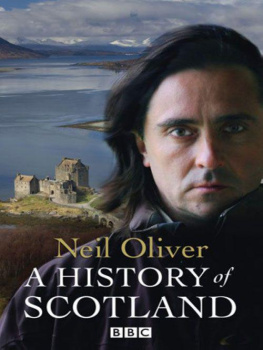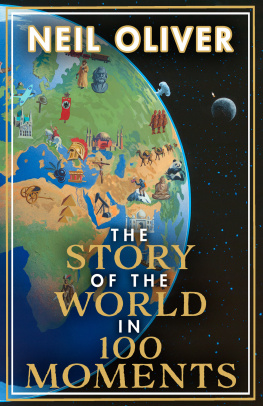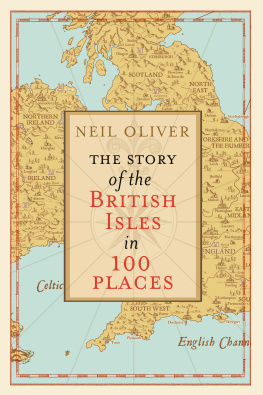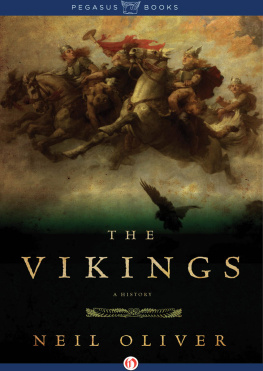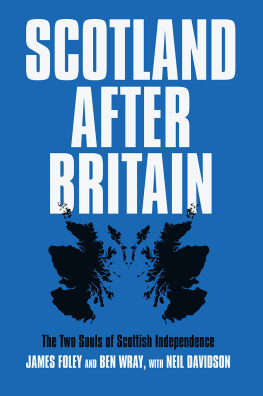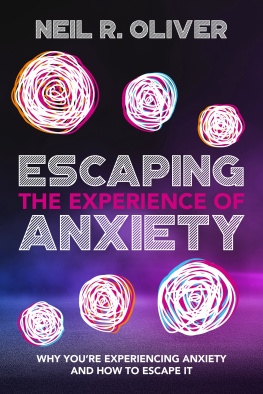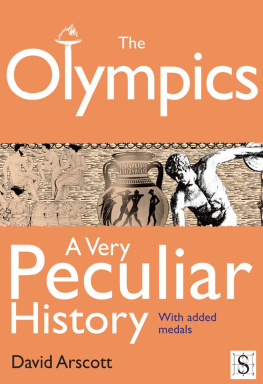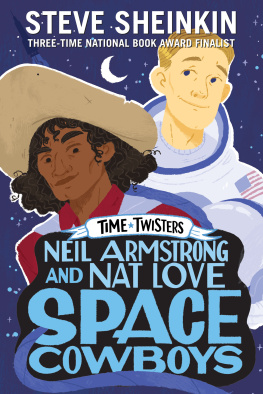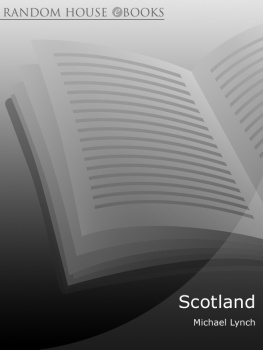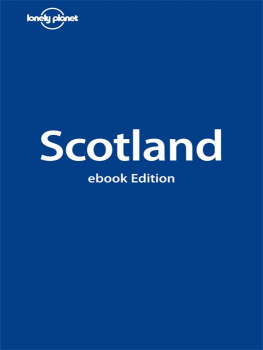Table of Contents
A History Of Scotland
NEIL OLIVER
Orion
www.orionbooks.co.uk
A Weidenfeld & Nicolson EBOOK
First published in Great Britain in 2009 by Weidenfeld & Nicolson
This eBook first published in 2009 by Weidenfeld & Nicolson.
Copyright Neil Oliver
The rights of Neil Oliver to be identified as the author of this work has been asserted by him in accordance with the copyright, designs and patents act 1988.
All characters and events in this publication are fictitious and any resemblance to real persons, living or dead, is purely coincidental.
All rights reserved. No part of this publication may be reproduced, stored in a retrieval system or transmitted in any form or by any means without the prior permission in writing of the publisher, nor be otherwise circulated in any form of binding or cover other than that in which it is published without a similar condition, including this condition, being imposed on the subsequent purchaser.
A CIP catalogue record for this book is available from the British Library.
eISBN : 978 0 2978 6029 7
This eBook produced by Jouve, France.
Weidenfeld & Nicolson
The Orion Publishing Group Ltd
Orion House
5 Upper St Martins Lane
London WC2H 9EA
An Hachette UK Company
www.orionbooks.co.uk
For Trudi and Evie
ACKNOWLEDGEMENTS
The best bit about writing a book is gathering together the names you want to remember when all is said and done. With a book called A History of Scotland it is especially satisfying - counting all the people who helped, into something that sounds rather grand.
Michael Dover at Weidenfeld and Nicolson was patient, encouraging and wise throughout the process - just his tone of voice on the phone was enough to instil calm when deadlines loomed large. Huge thanks also to Linden Lawson: her careful and constructive copy-editing made all the difference. I am grateful to Rosie Anderson, my proof-reader, Kate Inskip, my indexer, and Caroline Hotblack and John Morrice for picture research. To the whole team at Weidenfeld and Nicolson, in fact, many thanks.
Neil MacDonald and Richard Downes at BBC Scotland deserve a special delivery of gratitude for the idea of the Scotlands History project - along with Audrey Baird, Fiona Crawford, Sandra Breslin and the rest of the dedicated production team. To all, my sincere thanks, especially to Jon Morrice, Stevie Whiteford, Katie Holman, Julia Jamieson and Careen Murray.
This book would have been well nigh impossible without the help and advice of the directors behind the various episodes: Sarah Barclay, Clara Glynn, Bill MacLeod, Jane McWilliams, Colin Murray, Tim Niel and Andrew Thompson. Without them I would hardly have known where to start and my heartfelt thanks are owed to all.
Neville Kidd directed the photography on every programme in the series, with the help of Francis MacNeil. Douglas Kerr looked after all of the sound with the utmost care. I can only speak for myself, of course, but for me the filming of the series was just a pleasure.
Lovely Eugenie Furniss at William Morris Endeavour Entertainment
takes scrupulous care of me, as does the equally special Sophie Laurimore. Love to both as always.
But, for all that, no one is more deserving of my gratitude than Trudi, who takes care of absolutely everything that matters while I either swan about the countryside being well looked after or hide in the study at home moaning about supposedly impossible deadlines. Really, it is all down to her and I could never thank her enough.
As always, any and all mistakes in this work are mine and mine alone.
INTRODUCTION
How do you do justice to a history of Scotland? The scale of the subject, coupled with the sheer volume of books already available, makes the task daunting enough. By pitching my best efforts in amongst the rest, I am making of myself a minnow in an ocean heavily populated by leviathans - not to mention several sharks and the occasional venomous jellyfish. But Scotland is a place I have loved all my life. For me, therefore, writing about Scotland is like writing about a loved one and the fear of not doing right by her is almost overwhelming.
I found the only way to get started in the first place was to accept, even to celebrate, the fact that Scotlands history belongs to every one of us: to all who live there now as well as to any whose family trees stretch a root all the way back to the old country from wherever they find themselves today. The biggest mistake is to imagine that only academics have a say in recording and commenting upon the story of this land and this people. On the contrary, I believe it is the responsibility of every one of us to understand how and why our nation turned out the way it has. Failure to do so is to live for ever on one, randomly selected page of a novel. History is the collective memory we can use to start the book at the beginning - to understand the emergence of the characters and plots we share our own few lines with. How can we fail to be fascinated by history when we are, all of us, its survivors? To live at all is miracle enough, said Mervyn Peake, and it is history that explains the mystery of how any of us are even walking the earth. Without that understanding we are adrift like goldfish in a bowl, condemned to greet every moment of the present with wide-eyed surprise.
Scotlands history is also a crucial component of the history of Britain, of Europe and of the world. The unfolding story north of the Border has inevitably shaped the stories of the neighbouring countries of this (for now at least) United Kingdom. Scotland, England, Ireland and Wales are like tenants of a shared house. We each have our own room but we meet the others in the hall, the kitchen and the living room all the time. Scotland has also shaped the story of the wider world. Scots have long been the worlds vagabonds, the tattered outcasts of the earth, and our very natures have dictated at least a few lines of the story of every other country on the planet.
Apart from anything else, history is always family business - the good, the bad and the ugly as well as the downright shameful and embarrassing - and discussing it in public always leads to arguments. Scotlands history, like every other, is an amalgam of fact and opinion - and there are at least as many of the latter as the former. And that is why it is the most fascinating and engaging stuff of all. There is nothing like a good old row.
I was curious about my own family from the very beginning. I wanted to know where we had come from and why. Why we lived in the house we did, in the town we did. Who were our relatives and where did they live, and what did they do, and why? Eventually I realised this was the beginning of an interest in history: I simply needed to understand how the people I knew fitted into the bigger story. Having done that, the bigger story became just as fascinating and compelling as anything happening at home.
So when I was given the chance to get involved with BBC Scotlands Scotlands History project I recognised it as a once-in-a-lifetime opportunity. All-singing, all-dancing productions like this, with television and radio programmes, books, websites, music and concerts do not come along very often - perhaps once a generation - and to have the chance to be identified with my own generations telling of my nations story was completely intoxicating.
I started my working life as a field archaeologist, helping to excavate and record sites from all periods of Scotlands past, from the Stone Ages to the Industrial Revolution. My first dig was at Loch Doon, near the village of Dalmellington, in Ayrshire. It was directed by a dear man called Tom Affleck who had made a second career for himself, relatively late in life, out of his lifelong fascination with archaeology. Toms first degree, completed just after World War II, had been in botany and for years he had been a market gardener. But, happily for many of us, he went back to university in the 1970s to pursue his second academic love. By the time I met him, in the mid 1980s, he was working towards his doctorate in the subject.

